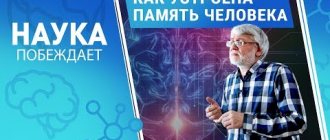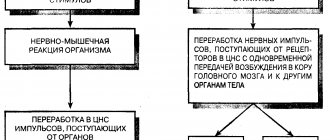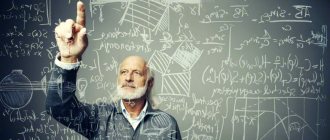Eidetism is the ability to accurately and maximally detailed reproduction of images (visual, sound, tactile) of individual objects or scenes after the cessation of their direct perception. These images are characterized by a difference from ordinary familiar themes, and the psyche continues to perceive the object in its actual absence. Another definition of eidetism characterizes it as the ability to independently evoke and hold in attention images that, in terms of the impact of their sensory characteristics, are identical or superior to reality. The phenomenon and the principles of its functioning have not been fully studied and are manifested only in a small percentage of the adult population, while in childhood eidetism is considered a more popular phenomenon. Subsequently, the functions of eidetic memory are lost or significantly weakened in the process of developing verbal skills.
Eidetism is a scientific definition in psychology, which in non-core literature and everyday use is called photographic memory. Photographic memory does not exist as one of the mnestic types. As a result of experiments aimed at establishing the fact of its existence as such, it was revealed that none of the group of subjects could fully fulfill the conditions of the experiment (reproduce from memory a text turned backwards, whereas when looking at a photograph this task is not particularly difficult ).
The presence of tendencies towards eidetism is due to physiological factors (genetics, brain development, neuroplasticity), but as a constitutional trait it persists in a relatively small number of adults. It was also noted that the preservation of eidetic abilities is associated with the nature of human activity, and is more common in creative professions.
The development of eidetism has several areas of training, during which, of course, mnestic abilities improve, but the eidetic type of memory does not always develop.
The concept of eidetic memory and its development in psychology
Eidetic memory in psychology or eidetism is a special type of thinking in which a person is able to instantly remember various images and then reproduce them.
Eidetic memory in psychology - what is it.
The phenomenon is characterized by visual impression, as well as other sensory modalities:
- taste;
- tactile;
- olfactory;
- auditory.
Eidetic images held in memory differ from objects of perception in that the individual is able to perceive an object, object, or phenomenon as present at the moment, which allows one to experience various phenomena in their absence.
The term is derived from the Latin word εἶδος, which translates as “image” or “appearance.” An individual with such a memory only needs to look at the required picture once, after which he will be able to accurately describe the image he saw. The phenomenon is otherwise called photographic memory.
History of origin
According to researchers, eidetism was first described by the Serbian scientist in the field of psychoanalysis V. Urbancic in 1907. The theory of figurative thinking was developed at the German school of psychiatry and psychology named after E. Jensch, who, together with students, conducted a number of fundamental studies of the eidetic phenomenon.
Years later, in 1933, Hitler’s supporters created the so-called “integration typology” - a concept of an ideological type that linked eidetics and national ideas.
This served to develop various socialist slogans, and subsequently to the creation of techniques for improving photographic memorization.
In the USSR, the most significant contribution was made by the Soviet psychologist L.S. Vygotsky, after which scientists dealt with the issues of eidetic memory:
- P.P. Blonsky;
- S.V. Kravkov;
- A. R. Luria;
- S.L. Rubinstein;
- B.M. Teplov;
- F.N. Shemyakin.
The eidetic theory was first mentioned in the scientific journal “Pedology” by P.P. Blonsky, as well as in the book “Essays on Psychology” by S.V. Kravkov, which were published in 1925-1930.
In the works described, first of all, the emphasis is on a meaningful practical definition of eidetics as an important and previously unstudied type of memorization.
The book “Psychological Essays” contained a definition of eidetism, including a listing of the main problems of the theory, excerpts from various research protocols, and the original sources of experiments were also evaluated and indicated.
Eidetics in the USSR developed not so much as a developing technology for the population, but was assessed from the point of view of an ideologically determined theory.
Before the development of a special type of memorization within the framework of Nazi science, eidetic techniques were perceived by Soviet scientists in the same way as others - factuality was welcomed, and logical constructions on theory without concrete practice were criticized due to non-acceptance by Marxism.
What it is
Eidetic memory is a type of memory that allows you to retain a visual image and then reproduce it in great detail. At the same time, other sensory modalities are also connected: visualization is followed by tactile, gustatory, auditory, olfactory and motor memories. Another feature is long-term storage and random recreation of all this at the right moments. Many years may pass after the event, but a person, if desired, is able to experience it just as vividly again and again.
Photographic memory is distinguished primarily by the detail of visual images. All people probably remember the shot from the film “Titanic”, where the main characters stand at the stern of the ship, arms spread wide. But few people will immediately answer whether Rose was wearing jewelry at that moment, how much and what kind exactly, what kind of pattern was on her scarf, whether her hair was braided in her hair and many other little things. An eidetic person, even if he watched the film many years ago, can easily tell about them. He will also add about what color the sky was and what chains the young people held on to so as not to fall.
Visual eidetism can be innate (explicit), and then the person possessing it becomes a real phenomenon for everyone around him. It can also be developed throughout life and achieve considerable results. Perhaps not as impressive as those of natural geniuses, but sufficient to successfully memorize large amounts of visual information.
Origin of the word. The term “eidetic” comes from the ancient Greek word “εἶδος,” which translates as “image, appearance.” This reflects its basic essence - the ability to remember and reproduce visual objects.
Main characteristics
Both historically and substantively, a detailed description of the eidetic theory was based on the consideration of any relationships, hereditary component, as well as the unity of the 3 main aspects or levels of given areas.
Scroll:
- Eidetics . Acts as a general psychological theory, which is at the level of philosophical, theoretical, and methodological errors of psychology as a science.
- Eidetism . It is perceived as an experimental or empirical phenomenon, indicating a special type of memorization, which subsequently led to the development of eidetics as a private scientific theory.
- Integration typology . It is a fascist idealistic, essentially a pseudoscientific concept that includes features of meaningful, functional, or organizational-transforming processes in the role of the superman personality.
In the concept of modern psychology, it is customary to highlight the characteristics of eidetic memory, based on which one can make a value judgment about one type or another.
Scroll:
- Visualization and Sensory . Reproduction of primary visual images, while secondary ones follow visualization. Thus, an eidetic person will first of all remember a figurative picture, after which - other images. For example, at first we talk about the beach, then thoughts develop about a cocktail in hand, other people, olfactory sensations, and so on.
- Detailing. The most detailed drawing of all images, in which such little things are remembered as the number of buttons on a shirt, whether the laces are tied or not, and so on.
- Involuntary retention of objects . In this case, the individual does not set the task of remembering anything; objects or phenomena are stored in memory automatically, unconsciously. The involuntary variety is characteristic only of born eidetics.
- Great variability . A well-developed eidetic memory, especially at birth, indicates the ability to simultaneously memorize more than 10 foreign languages, quote all of Shakespeare, or know by heart the passengers of 3 different airliners, only once having seen information about their names.
Eidetic memory in psychology can be both acquired and innate. If the first type relates to the practical development of technology, then the second indicates various brain anomalies. At its core, eidetics is the science of improving photographic memory.
Diagnostics
To find out how well a person's long-term memory is developed, various test methods are used.
Method No. 1. Memorizing words that are logically unrelated to each other
The bottom line. The subjects are given 2 lists of words (for children 6-12 years old one will be enough), which are logically unrelated to each other. Each of them is numbered.
Recommended Material:
Task options:
- Lists can be read aloud (without allowing subjects to write them down). If the words are read out, this must be done 2-3 times for adults and 4-5 times for children 6-12 years old.
- They can be written on the board.
- They can be distributed on separate pieces of paper to each subject.
Exercise:
- Listen/read the lists of words carefully and try to remember them.
- After listening/reading multiple times, try to reproduce it on paper. Preferably in the same order.
- Next, you need to be distracted by some other activity.
- After half an hour, the lists are read/listened to one more time and played again.
- The same thing is done twice more - the next day and a week later. The words are read/listened to again, but only once.
The results of all 4 tests are calculated using the following formula:
C (DVP coefficient) = B (number of correctly reproduced words): A (total number of words) x 100.
Next, the arithmetic mean of all 4 tests is found and based on the resulting result, conclusions are drawn:
Method No. 2. Memorizing text with semantic connections
The essence of the technique is almost the same. Only the text is not read aloud, but is distributed to each subject
At the same time, attention is drawn to the fact that the main thoughts are highlighted in bold, which must then be reproduced. That is, it is not necessary to memorize the sentences themselves and the entire text.
This technique is used to diagnose DVP in adolescents (13-17 years old) and adults.
Card with text:
You need to reproduce the main ideas of the text immediately after reading, then after half an hour, the next day and a week later. The results of all 4 tests are calculated using the formula:
C (DVP coefficient) = B (number of correctly reproduced thoughts): A (total number of highlights in the text) x 100.
Next, the arithmetic mean of all 4 tests is found and, based on the resulting result, conclusions are drawn according to the table above.
In case of serious impairments of long-term memory, laboratory diagnostic methods (EEG, CT, MRI, ultrasound) are performed.
Typology of eidetics
Through the efforts of E. Jaenschem, as well as his collaborators O. Cro, G. Fischer, and A. Rykiel, a practical classification of steps has been developed that give value judgments of the severity of eidetic memorization.
They are:
- The presence of an afterimage with natural characteristics, which is often characterized by a short duration. Characterized by various distortions in memories, such as: different colors of clothes, different words, etc.
- To create an image, it is necessary to reinforce it with the help of certain visualization techniques. The afterimage acquires the properties of a visual object.
- It is characterized by weak visual images, the need for fixation, as well as deviations in the sizes and shapes of identified objects.
- Characterized by visual images of an average or weak nature. This includes simple objects that do not need to be fixed. When trying to remember complex subjects, only some details emerge.
- Full-fledged clear images are recreated in the mind from objects of any type.
- Visual images are seen as clearly as possible, with all the details present.
Based on the theory of classification, psychologists proposed to classify people who are capable of a photographic type of thinking, which is why the terms “T-type” and “B-type” were introduced into psychological practice.
If in the first group, eidetic experiences are as persistent as possible and do not disappear over time, then the second group are capable of voluntary memories and conscious intervention in them.
According to psychologist W. Jaensch, such types develop due to certain types of facial expressions, special development of the hormonal system, as well as the presence of head injuries or any other diseases that can affect the neurophysiology of the brain.
Short-term visual memory
Short-term memory is a short-term memory process, as a result of which you receive some information. It is also called working memory, it has a short period and limited volume.
With this type of memory, you can retain the memorized material of only four objects. It stores in memory cells small information that we currently consciously remember.
Short-term memory receives an amount of information from the senses, from long-term memory. The processes that occur in it are not stable and are reversible.
Short-term memory of visual images
Images in short-term memory exist due to the functioning of connections between neurons, through multiple passages of excitation along circular neural circuits. Retention of pictures occurs due to mental pronunciation.
How to develop
Eidetic memory in psychology is a phenomenon that can be either innate or acquired.
If in the first case, the presence of photographic memorization is explained by anomalies in the development of the brain system, then in the second - by oriented work on oneself. From an eidetic point of view, psychologists identify several ways that will help develop eidetic memorization.
The most effective are:
- Aivazovsky method;
- neurobics;
- special exercises.
Aivazovsky method
Based on some historical information, the Russian marine painter I. Aivazovsky had a largely developed eidetic memory, which allowed him to transfer any movements into painting.
Thanks to this, he was able to achieve excellent results in depicting stormy weather, waves, the colorful horizon, and other features of marine art.
To master Aivazovsky’s technique, you need to perform a number of simple steps:
- Select the desired object to remember.
- Within 5 min. look closely at an object.
- Close your eyes and mentally imagine it, then describe it in the smallest detail: size, shape, color.
- Open your eyes and compare the real and presented imagery. If something was missed, notice and write it down.
- Repeat the exercise until the visual outlines completely coincide with each other.
In order to achieve perfection in technology, it is necessary to choose increasingly more complex subjects each time. So, for the first exercise you can choose a bottle of water, and for the last - a complex picture. It is also recommended to gradually reduce the time allocated to observing the subject.
Pop culture heroes
Television characters with eidetic memory, including Special Agent Fox Mulder from Top Secret, Batman villain Bane, Detective Adrian Monk from Monk, Dr. Spencer Reid from Criminal Minds, Dr. Sam Beckett from Quantum Leap, Dr. Lexie Gray from Grey's Anatomy, Dr. Sheldon Cooper from The Big Bang Theory, Shawn Spencer from Psych, Olivia Dunham from Fringe, Mike Ross from Suits, Micah Bering from Warehouse 13, Mozzie from White Collar, Olive Doyle from Disney's M.U.R.A.H. ", Seven of Nine from "Star Trek: Voyager", Susan Ivanova from the series "Babylon 5", Brick Huck from the series "Middle Men" and Charlie Andrews from the film "Heroes".
In the Swedish series Millennium (The Girl with the Dragon Tattoo) by Stieg von Larson, the hacker heroine Lisbeth Salander had an eidetic memory. In the movie Good Will Gunting, starring Matt Damon, the main character Will Gunting had both an extraordinary IQ and an eidetic memory.
Much of the story of Terry Pratchett's humorous fantasy Lesser Gods is based on hypermnesia, the eidetic memory of the newcomer Brutha. He remembered every moment of his life in perfect detail, even the exact position and timing of an individual's steps. He could not read, but he could produce perfect reproductions of the documents he had seen from his memory because he remembered the shape and size of the letters. When he witnessed dubious events and received an order to forget her, he could not understand the order because he had no concept of the “process of forgetting.” When asked what he remembers first, he replied: “A bright light, and then someone hit me.”
Exercise to develop photographic memory
Exercises to improve eidetic memory are primarily aimed at developing all areas of memory. The variability of techniques allows you to find the most convenient one, based on a specific situation.
The most popular exercises are presented in the following table:
| Name | Performance |
| Casual observation | Counting the quantitative number of houses, floors in them, trees, cars, shops and other little things that will be interesting. Consolidating images on the way back. Connecting objects with their numerical value, depending on the number of floors, empty parking spaces, etc. |
| Association | When memorizing any type of information, objects or phenomena must be represented in the form of images. |
| Textual criticism | Make a printout of the text in A4 format with unfamiliar text, then read it as carefully as possible and try to remember it. Ask another person to add up to 5 new words to the text and print it out again. The main goal is to find innovations as quickly as possible. |
| Palindrome | Read any signs or names backwards out loud. Over time, improve your technique by reading sentences on tables. |
In addition to exercises, various board games can also improve eidetic memory, such as “Find 10 differences”, “Find the cat in the picture”, “Paired images”, reaction and attentiveness tests, and many others.
Neurobics
Eidetic memory can be developed using the Neurobics technique, which in the practice of psychology is often characterized as the best gymnastic exercise for creating new neural connections.
The most effective exercises of this technique:
- Constantly come to a certain place using different routes, while simultaneously performing the “relaxed observation” technique described in the table.
- Throughout the day, once a week, do any actions with the other hand that is not used in everyday life.
- Several times a day, read a highly intelligent scientific article with as many incomprehensible terms as possible. Try to delve into all the words, capturing their objective meaning.
- Mute the sound when watching a video, trying to understand what exactly the person is saying. Various reports, news or regular entertainment content with a person constantly in front of the camera are better suited. Next, compare what was said with the video material. For more convenient execution, use a voice recorder.
- When answering questions from people around you, try to pronounce each syllable and sentence as clearly as possible, associating yourself with the hero of the essays or poems. The main thing is beautiful, unusual speech patterns.
Since there are many examples in which people developed the skill of photographic thinking without any prerequisites from childhood, frequent repetition of exercises will improve the rapid memorization of any information.
Related materials:
Armani | Shiseido | Dr. Brandt | Giorgio Armani | Armani | Giorgio Armani | Shiseido | Dr. Brandt | development | Memory | Dustin Hoffman | training | exercises
Articles
- Secrets of creating perfect eyebrows October 05, 2013, 00:00
- New Year's films for men December 19, 2015, 00:00
- Life: multi-layered sculpture by Joshua Abarbanel November 11, 2021, 00:00
Video
- Skin care around the eyes from SHISEIDO May 17, 2010, 00:00
- Monochrome makeup. Ideal face by Giorgio Armani March 05, 2011, 09:55
- New fragrance ACQUA DI GIOIA Eau Fraîche from Giorgio Armani July 01, 2013, 11:00
Photographic memory training in children
Since eidetic memory in children most often manifests itself in preschool or primary school age, the most favorable age for its development is 3-7 years. If you skip this time period, memory is replaced by ordinary memorization based on cause-and-effect relationships.
Other studies indicate manifestations of photographic memory in individuals aged 12-16 years. In any case, the sooner you teach a child eidetics, the better it will be in the future. Memory development exercises for children are somewhat different, due to the easy technique of implementation.
One of these techniques is “Visual drawing”, in which the child must answer a question about what a particular letter looks like. For example, the letter B is associated with the sail of a ship. After which he must draw the image on paper. The main thing is not to limit the child and give free rein to his fantasies.
“Mental drawing” is the second most important technique for developing eidetics for children, in which it is necessary to memorize any verse with the simultaneous presentation of all the described images.
Types of memory
Information entering the brain is grouped under the influence of the characteristics of mental activity, measures of image awareness, the type of functioning goals, and duration.
Based on the organs of perception of objects, according to the characteristics of inferential activity, memory is divided into types:
- Imagery (created through sensations) differs according to the senses:
- visual;
- auditory;
- taste;
- olfactory;
- tactile.
- The motor form manifests itself in the form of preservation and reproduction of operations associated with movements (swimming skills, skating, cycling, football).
- The emotional aspect is revealed in feelings; it refers to the most reliable process of fixing objects. This is the preservation of experienced emotions (fear, shame, joy, anger).
- Semantic (semantic) group, where memorization is based on thinking processes and words. Such memory can be of a mechanical type (developed in the process of repeated repetition of information without comprehension) and logical type (based on the development of logical connections).
Based on the ratio of degrees of awareness, the following types of memory are divided:
- the implicit form is the preservation of images expressed unconsciously;
- the explicit subtype is based on the deliberate application of acquired information.
In connection with the goals of activity, the following types of memory are divided:
- unconscious thinking that appears in the mind regardless of the tasks assigned;
- conscious memorization, enabled by moderate retention of objects, associated with specific tasks.
Based on the duration of retention of pictures in memory, the following types are determined:
- instantaneous (sensory) mode, which retains information received from the senses without processing it;
- short-term form, characterized by short-term perception and reproduction of images in the first seconds after awareness;
- operational view, functioning only at the moment of performing specific tasks, then the information is erased after some time;
- long-term form refers to long-term storage of information, characterized by repeated use.
According to the purposes of the study, memory is divided into types:
- genetic (inherited);
- biological;
- episodic (saving individual fragments of images);
- reconstructive (correction of broken chains);
- reproductive (constant repetition of the reproduction of a stored object);
- associative (creating links between saved and existing objects);
- autobiographical (remembering events from personal life).
The problem of eidetism
Considering that eidetic memory in psychology refers to another type of memorization and acts as a social, sensory or spatial context, debates about the issue of the phenomenon are still ongoing in scientific circles.
It is believed that this is another simple type of thinking that is no different from others.
The situation is different in psychiatric practice, where only innate eidetism is considered, and not its development with the help of certain techniques.
Recently, the theory has been developed that this ability relates to serious mental disorders, as indicated by the risks of schizophrenia when trying to develop photographic thinking.
Recent research refers to the fact that the amount of memory used to store imagery of objects occupies a large place in certain areas of the brain, due to which it seriously changes its physiological and chemical properties.
Through the efforts of M.P. Kononov revealed a direct relationship between innate eidetic memory and the presence of hallucinations in children, as a result of which the experiment was continued, revealing a similar pattern in adults.
Within the walls of the University of California, a relationship was discovered between the presence of photographic memory and the development of epilepsy.
As it turned out, epileptics often, before the attack itself, reproduce in their consciousness various images of a hyperrealistic nature, which are often accompanied by a secondary sensory modality.
Based on the experiments carried out not in favor of photographic memorization, many experts in the field of psychology note that such innate memory is a pathological process, which is why it requires constant monitoring by the attending physician.
This is also confirmed by the fact that most popular eidetics suffer from one or another mental disorder: autism, dementia, schizophrenia, etc.
There is an established opinion in society that eidetic memory is almost a panacea for all problems. After all, by memorizing the maximum amount of information, you can use it and not go through textbooks again, try to remember the missing details, and so on.
However, there is some evidence in psychology that points to a detrimental effect on the brain. Whether to use techniques on yourself or to abstain is the decision of each person.
Stages
Coding
Unlike short-term, human long-term memory does not imply any specific type of representation of verbal material. This means that coding here is neither visual nor auditory. It is based on elements, the main one being meaning. Because of this, information retained and later reproduced is rarely 100% accurate.
Playback
A person cannot reproduce information from the KVP because it fades away or is replaced by new images. In long-term memory this is excluded. Everything that a person consciously remembers remains in storage for life. The question here is quite logical: why then can’t we remember some events from the past? And what about those who experience failures?
Here it is appropriate to compare a warehouse of information with a huge library of a million books. Those shelves that we often access are always at hand, so the material from them can be easily and quickly reproduced. But if you ask an older person whose field of activity does not intersect with mathematics what Newton’s binomial formula looks like, which he studied in the 10th grade algebra course, he is unlikely to remember, although he memorized it during his school years. It is in the storage of his memory, but it is too far away, and he is unlikely to find it without repeating it.
In psychology, the reproduction of information in long-term memory can go in two ways - through its search and activation.
Block 1. Lifestyle changes
- Learn to cope with stress. Anxiety, depression and anger have been shown to increase cortisol levels in the brain. This can cause damage to cells in the hippocampus, the area of the brain responsible for storing data in memory.
- Exercise, keep your brain in good shape: don’t put down the newspaper with a crossword puzzle, don’t give up playing board games, study a foreign language.
- Play sports and spend time on physical activity. This way, the brain will receive the necessary oxygen and beneficial nutrients.
- Avoid bad habits. This is especially true for alcohol abuse and smoking.
Block 2. Memory strategy
- Eliminate distractions. When studying material that you need to remember, try to organize the process so that nothing distracts you.
- Use visual associations. When remembering information, associate it with images that are easy to remember. One option is the “mind palace” of a modern-day Sherlock Holmes, created by the BBC.
- Repeat. This does not mean memorization, but repetition, which is suitable for remembering a small amount of information at once, for example, a name. The technique is this: after your interlocutor pronounces the name, repeat it to yourself in different forms: Alexander - Sasha - Shurik - Sanya. The second option is to immediately use this name in speech, directly when addressing a person.
- Find more detailed useful information about memory development in the training on our website.
Adviсe
To have exceptional abilities, regular practice to improve them is important.
Here are some tips to help you master phenomenal memory:
- Spend at least 15 minutes a day training your brain and memory;
- Play chess;
- Read consciously, retell what you read out loud;
- Solve puzzles, puzzles, crosswords, rebuses;
- Learn poetry or prose by heart;
- Do mathematics, do not delve into integrals and logarithms, even solving arithmetic examples has a strong effect;
- Try to constantly train your memory in life by memorizing phone numbers, addresses, names, shopping lists, car numbers, random facts about people;
- Don't neglect your health and eat right;
- Play sports, scientists have found that this has a beneficial effect on intellectual abilities;
- Get enough sleep and don’t get overtired, give yourself a rest if you’re tired;
- Don't forget to walk and breathe fresh air.
By following these tips, you can improve not only your memory, but train your brain, make yourself a more well-read and interesting person.











